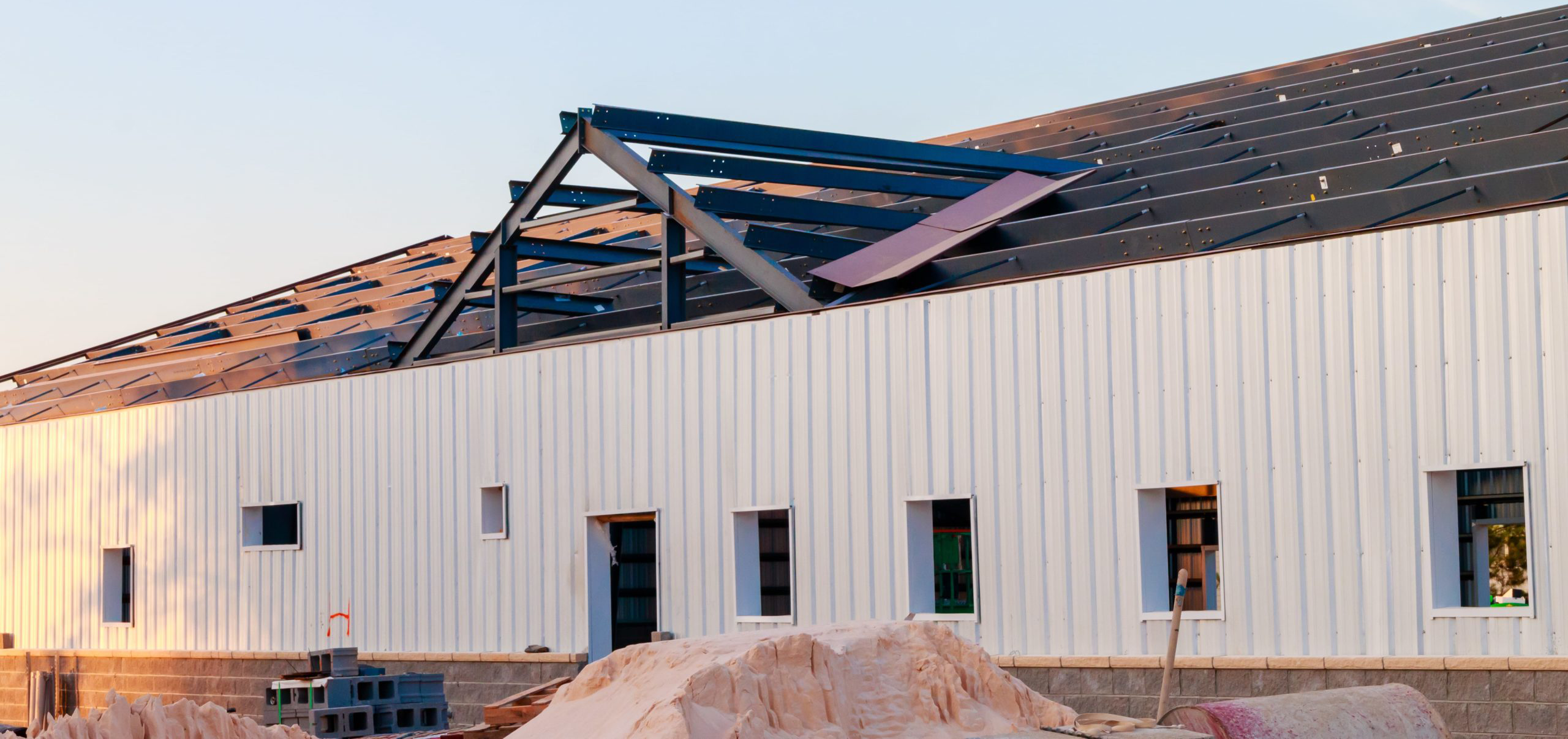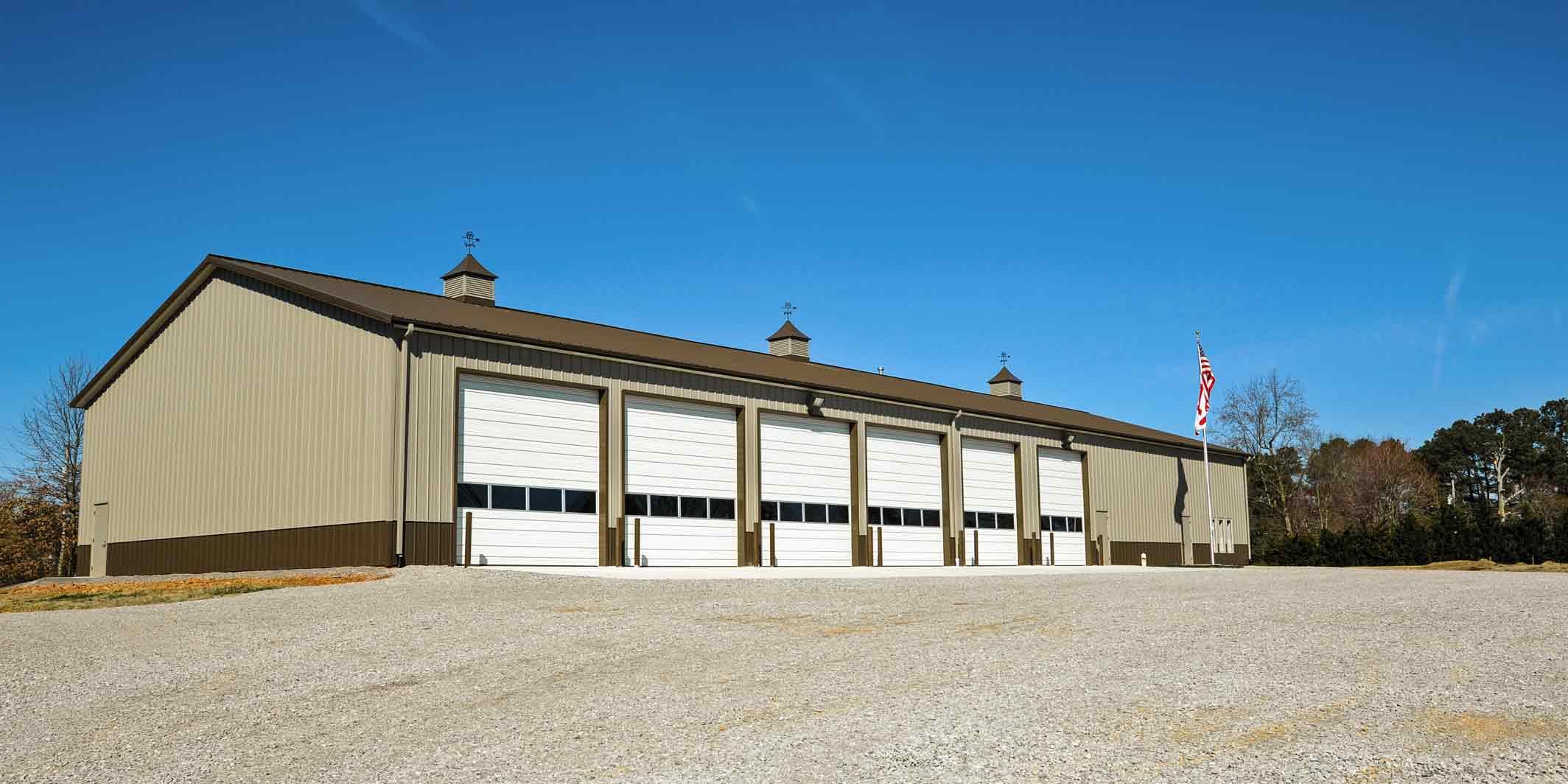Prefabricated metal buildings are often chosen for their open concept design. The strength of steel eliminates the need for interior columns within a 300-foot width limit. And once more, changing the pitch of the roof won’t present the need for additional interior columns. With any prefabricated metal building, the floor plan can be molded to fit practically any need. Now, you have a decision to make about what goes overhead.
Your choice in roofs can be broken up into two main categories: steep slope and low slope. In this article, we’ll break down the pros and cons of each to help you make an educated decision for your prefabricated metal project. (We will cover single slope roofing in another blog)
Prefabricated Metal Building: What is a steep slope roof best for?
You probably see steep slope roofs every day. They are the most common choice for single-family homes, and for good reason. Since debris rolls easily off the sides and into gutters, steep slope roofs are a very low maintenance option. By eliminating the need for frequent cleanings and unloading heavy debris, steep slopes can extend the life of your roof and decrease the number of repairs necessary over time. They can also be the most aesthetically pleasing option. Most people find that a steep slope roof makes a project look more polished.
Steep slope roofs are ideally suited for prefabricated metal buildings like:
- Homes
- Houses of worship
- Academic buildings
- Barndominiums
- Agricultural and farming buildings
and more.
Most commercial buildings do not choose steep slope roofs because of the challenges that arise as the building grows in size. For example, a steep slope roof largely decreases space at the top of the building that could be used to store utilities.
While steep slope roofs are commonly known for being low maintenance, it isn’t as if they require no maintenance at all. The most common problem that arises with this roof style is clogged gutters. Steep slope roofs will need regular gutter cleaning to prevent run-off debris from creating a blockage.
What is a low slope roof best for?
It’s a common misconception that commercial buildings have flat roofs. In fact, there is no such thing! All roofs do have some level of the pitch to create runoff. Commercial buildings benefit from low slope roofs because they make it easy to hide large systems and equipment out of sight. That leaves enough extra space inside the building for an additional full-size floor. Many commercial buildings also use low slope roofs as an opportunity to introduce green technology like solar panels, or to create rooftop gardens and meeting spaces for their tenants.
Low slope roofs seem like an obvious choice for commercial buildings. They require less building materials than the alternative, keeping your expenses low. But before you make a decision for your prefabricated metal building, it’s important to weigh the pros and cons. Buildings with low slope roofs require careful maintenance year-round. Debris and water should be regularly removed to prevent leaks. Prefabricated metal buildings are built to withstand major weather events, like heavy snowfall. However, a low slope roof should still be regularly cleared to prevent collapse.
Other articles you might find interesting:
For more information on Prefabricated Buildings, CLICK HERE or give us a call 888-783-3535.
You can also reach us on Twitter at @coastalsteel.
Also, don’t forget to subscribe, share, and comment!


